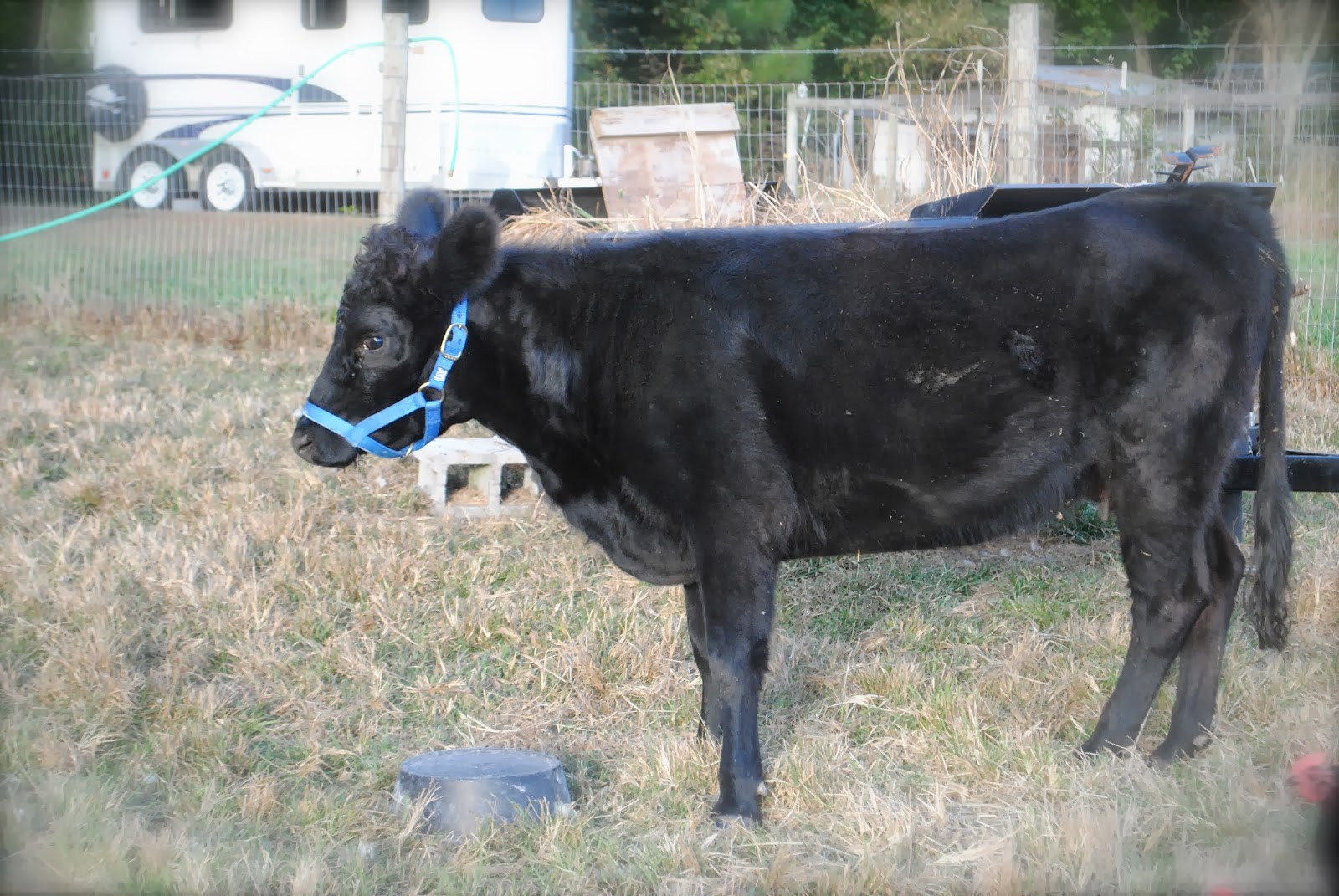One of my most popular posts ever (second only to the one on the cost of raising pigs) has been this one: The Cost of Raising a Steer: How Much Does Our Beef Cost Us? Over the three years since I posted this, I've gotten several questions in the comments.
Today I got a real poser, and I'd like to share it with you:
Let me start with a disclaimer: I am NOT at all knowledgeable on this subject! Everything I know about it I did NOT learn in kindergarten. In fact, everything I know about this subject I have learned from other people who ARE very knowledgeable on the subject.
I do, however, love our cattle. I love what we're doing and I love sharing what I've learned. So now that that's settled, how did I answer this young person's question?
Their question was so good and the answer so complicated that I thought they deserved their own post. So thank you, Tristan, and here's the answer to your question . . .
Today I got a real poser, and I'd like to share it with you:
"I have a project for school due soon and one thing I have to figure out is how much it costs to raise a free range cow, versus the cows treated in factories, and how much money is made from each of them. If you happen to know any of this information that would be amazing and greatly appreciated for my project is due on Tuesday. Thx so much and pls respond asap, your information is already so useful and you seem like a very knowledge person for this type of thing, thx and hope to hear back. :-)"
I do, however, love our cattle. I love what we're doing and I love sharing what I've learned. So now that that's settled, how did I answer this young person's question?
Their question was so good and the answer so complicated that I thought they deserved their own post. So thank you, Tristan, and here's the answer to your question . . .
I'll try [to answer], but this question doesn't have a black-and-white answer that you can write down in neat columns to compare. I hope your teacher or professor will be open to seeing this. I listed the costs for raising our pastured steer in this post; unfortunately, I can't give you a comparative number as if he had been raised in a CAFO (Concentrated Animal Feeding Operation) or factory farm. In fact, I doubt any such number exists, and here's why:
The costs of raising beef in CAFOs far exceeds the list of expenses that get written down on paper. The feed is GMO (Genetically Modified Organism) and a high concentration of grain, which is not the natural food a cow's rumen is designed for. This creates health issues for the animal. In addition, the crowded conditions lead to disease and injury, which requires the use of antibiotics, which contributes to antibiotic resistance when the meat passes into the food chain for humans. Then there's the problem of waste disposal from all the animals crowded together in one place, leading to flies, pollution, odors and a general negative environmental impact. These are just a few of the related impacts which can't be quantified--and that is without even mentioning the quality of life for the animal.
Here's a link to an article that has photos of two ways to raise cattle. I think that illustrates the ethical issue of humane treatment very clearly, in addition to the issues of overcrowded animals in unhealthy conditions.
Here's an excellent interview with Michael Pollan on PBS, talking about a feedlot steer he bought and followed through its process to learn some of the things you're asking about. In this article he mentions the statistic that if an animal is fed grass or hay for the last few days of its life, the E coli in its intestines plummets by 80%. But the CAFO way of handling this problem is to throw antibiotics at the animal, and those are passed on to us in the beef. This Michael Pollan article is very long, but it's a thorough discussion of some of the issues I've mentioned, and more.
You'll notice there aren't very many numbers in that article! But I believe it clearly shows that the cost of raising beef in CAFOs instead of on pasture is one our society can't afford. I hope this helps you with your paper.
My answer to Tristan's question came from things I've learned from many other, much more knowledgeable people. But I have learned a few things myself. As a firm believer that a picture is worth a thousand words, here are some of things that I've learned personally . . .
You can't calculate these things on a balance sheet, but they are very, very real. Be sure to show this post to your teacher, Tristan--and I guarantee you'll get an "A" on your paper!




















































